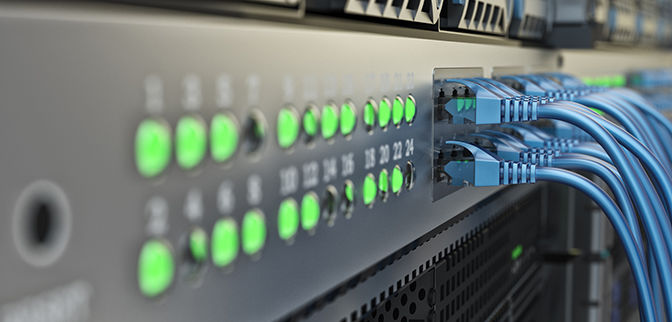Industry 4.0 has taken industrial electronics implementation to a new level. This boosted the efficiency of manufacturing businesses and increasing the safety and comfort of workers in one swoop. But many overlook the fact that widespread automation has also increased energy efficiency and energy savings of these enterprises. As a result, the level of carbon emissions from these businesses went down.

While it’s great to see the statistics on greenhouse gas emissions showing positive progress, we are not yet in the ‘green’ when it comes to eco-friendly industry. The owners of automated factories should take proactive steps towards increasing energy efficiency of their businesses.
Power Consumption Conservation During Industrial Electronics Implementation
At first it might seem that installing additional electronic devices on the factory floor will only increase the overall power consumption of the enterprise. However, a smart manufacturer will be able to reduce this particular metric through installing more efficient DC/DC converters. This will maximize the efficiency of the energy pulled from the grid overall. This step goes hand in hand with installing overall energy-efficient automated devices.
The DC/DC POL (point-of-load) converters should be installed at various points of the system in order to cut down the energy output wherever it can be minimized. System architects must account for them when developing their designs. These energy efficiency boosters aren’t mandatory and therefore the business owner should take special care in requesting them be added to their factory configuration.
Industrial Electronics Implementation as a Way to Improve Manufacturing Schedule
Scheduling and overall flexibility of the manufacturing process are key elements that can help business owners save not only on energy costs. They will also reduce the waste of materials and prevent overproduction.
Advanced automation allows achieving high levels of precision in the manufacturing control. Therefore, it enables the operators to maximize the equipment output minimizing energy consumption.
In the meantime, a variety of solutions can be utilized to better the scheduling of the manufacturing process to minimize the waste caused by equipment being idle. Variable-frequency drives and a variety of power control devices managed by AI can ensure that the factory uses every bit of electricity powering the production line efficiently.
Along with these industrial devices, specialized analytics solutions, which are also a part of the Industry 4.0, can be used to predict the necessary production volumes. The increased efficiency of automated machinery makes manufacturing more flexible, which allows even small businesses to run profitable factories producing small orders. The same technology implemented by big manufacturers can help predict the necessary production volumes and prevent the wastage of resources on excesses.
Monitoring Is Key to Energy Savings for Industrial Automation Improvements
Industrial electronics implementation can bring a variety of changes to the power consumption and overall energy efficiency of the enterprise. However, in order to make the most of the possible opportunities the revised processes must be monitored.
The manufacturers need to keep a close eye on the entire system performance and have the report broken down by components in order to determine areas for further optimization. Much like DC/DC converters, these monitors must be integrated into the system design to allow complete control of the energy use.
However, one shouldn’t forget that energy savings don’t unlock major benefits immediately. All manufacturers seeking to better their business through industrial electronics implementation should be aware that the initial installation will require a solid investment. However, the technology of today allows reducing long-term costs and these savings will grow with further automation. Combined with the environmental benefits of energy efficiency, this part of Industry 4.0 technology indicates that the manufacturing of tomorrow has a rather bright future.




